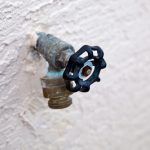Tips to Prevent Freezing Sewer Lines
When temperatures drop, your sewer lines could be at risk. If freezing becomes an issue, you might face major sewer line repair. Fortunately, there are some fairly simple steps you can take to prevent these disasters.
Use the following guide to avoid frozen pipes and sewer line repair.
Why do sewer lines freeze?
Sewer lines can freeze for a variety of reasons. Some of the most common causes of frozen sewer lines include:
- Faulty insulation: If there is not enough insulation around the sewer lines, the surrounding temperatures may get so cold that the lines freeze.
- Cold snap: Sudden drops in temperature can cause sewer lines to freeze, and these cold snaps are common during the winter months.
- No flow: If the line is not used frequently, the lack of flow can leave the line vulnerable. It may freeze due to the combination of exposure and lack of water flow.
- Thermostat malfunction: If the heating system does not work properly due to a malfunction in the thermostat or other component, this can leave sewer lines vulnerable. The property may become so cold that the pipes freeze.
- Poor drainage: If sewer pipes become blocked, they may freeze. A dripping runoff from another pipe may also block the drainage of the sewer line, causing the water to freeze.
How can you prevent your sewer line from freezing?
Fortunately, there are some easy steps you can take to prevent a frozen sewer line this winter:
- Check your water heater: It’s important that your water heater continues to work properly throughout the cold season. Inspect it in the fall, and check it regularly during the winter. It’s also helpful to increase the water heater temperature setting by several degrees for the winter.
- Add insulation: Check to make sure your pipes are well insulated. If they are not, add proper insulation. Be sure to insulate all pipes that are exposed to exterior areas, since they are the most likely to freeze.
- Start a drip: Normally, you don’t want to leave any faucets running when not in use; however, to prevent freezing in the winter, it can be helpful to run a small dribble of water. This continuous small flow will keep water moving to prevent freezing and future sewer line repair.
- Seal vents and cracks: If there are any vents or other areas that allow outdoor air to enter the property, seal them off for the winter. This will keep interior pipes warmer so they are less likely to freeze.
- Shovel snow: Don’t let snow accumulate or remain around water drains. As soon as possible after a snowfall, shovel away the snow around water drains to keep drainage flowing properly and avoid sewer line repair.
We’re here to help
Is your sewer line frozen? Do you need assistance with preventing frozen pipes? If you need help with sewer line repair or maintenance, contact the pros at Affordable Rooter. We’ve been serving the area for over 20 years and take pride in delivering excellence in service, every time. Our team specializes in a full range of plumbing services to meet your needs year-round. Reach us today at 719-964-8310 with any questions or to schedule your next service.




